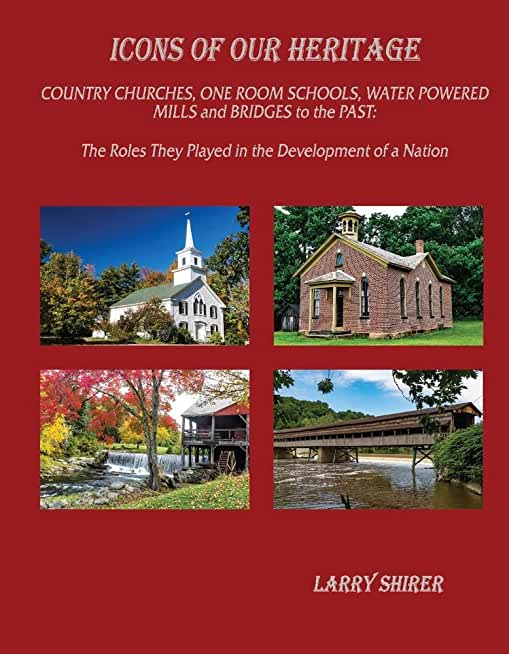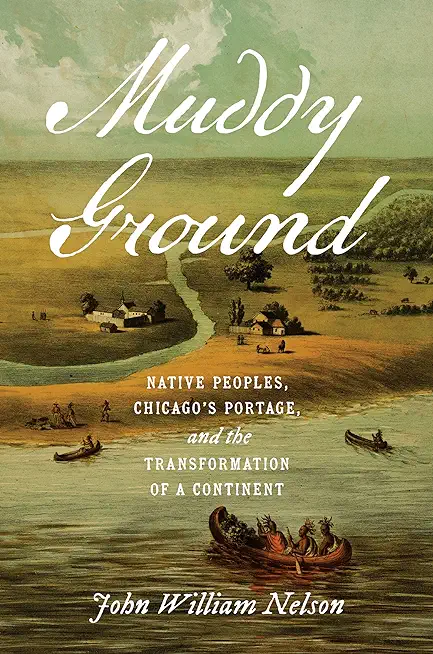
Shirer, Larry
product information
description
9This is primarily a book of photographs, but I have attempted in the text and captions to relate a little of the history and of the significant roles that Country Churches, One-Room Schools, Water Powered Mills and Covered Bridges played in the development of America.
Churches nurtured the spirits of our ancestors and kept them going in the face of adversity. The rural church, with its steeple or belfry, was more than a picturesque feature of the countryside; it was a vital part of American life. Churches facilitated the marryin and buryin and established the moral tone of the community. Churches brought and held communities together.
Teachers in one-room schools, with limited tools and resources, educated the bulk of our students for over 150 years. I can relate to the nostalgia for the one room school even though the school I attended in the 1950s had two rooms and two teachers. Many of us have fond memories of school days. I recall being excited about the prospect of going to school. I had an aunt, only eight years older than I, who taught me my A, B, Cs and numbers before I saw the inside of a school. I was anxious to learn more. I had always been told that I couldn't go to school until I was six. On my sixth birthday, in April, I was crushed to learn that I would not be starting school the next day; that I had to wait an unbearable four months until September.
Water powered mills ushered in the industrial revolution for America. These mills once supplied a nation of isolated rural communities with the necessities of life and represented the growing ingenuity and resourcefulness of the populace. Covered bridges provided practical solutions to getting people, livestock and products across streams and rivers and reflected the peoples' penchant for building things that last. Water powered mills and covered bridges made often forgotten, but significant, contributions to the economic and social development of our country.
I particularly tried to find structures with which there were stories associated. Where I was successful, I have included those stories. Learning the stories was the fun part of the project. Some of those stories, like the one about the Little Brown Church in the Vale, I found fascinating. While I'm sure all the structures pictured had related stories, most of the stories have been lost. Like homes, these structures had personalities that reflected the spirit, dedication and ingenuity of those who built, used and attended them.
This is my fifth book and perhaps the one on which it was the most fun to work, because it enabled me to pursue my interest in American history, which was born in a two-room grade school, and to scratch a more recent itch - the ambition to become a competent photographer. Finding the subjects of the photographs often became a sort of treasure hunt. I would learn of the subject from some reference source and then try to find it to take the photographs. Most often, by trial, error and GPS, I was able to find the subject. A few eluded me, and I sometimes found the site only to learn that the subject had disappeared. Some of the country churches I stumbled on when searching for something else. The pursuit of the subjects took me through several states. Some of the settings were so beautiful and serene that I could not resist simply pausing for a while to absorb the wonder.
Reflecting on the contributions of those responsible for these institutions to the development of our nation helps us develop a perspective of who we are, what we have accomplished, and what we can accomplish. If we lose sight of our past, we lose our ability to intelligently look forward. Just as we stand on the shoulders of those who went before, the wellbeing of future generations is dependent upon our integrity, perseverance, collaboration and wisdom.
My hope is that reflecting on these photographs and stories will increase your appreciation of the spiritual, cultural, economic and aesthetic wealth
Churches nurtured the spirits of our ancestors and kept them going in the face of adversity. The rural church, with its steeple or belfry, was more than a picturesque feature of the countryside; it was a vital part of American life. Churches facilitated the marryin and buryin and established the moral tone of the community. Churches brought and held communities together.
Teachers in one-room schools, with limited tools and resources, educated the bulk of our students for over 150 years. I can relate to the nostalgia for the one room school even though the school I attended in the 1950s had two rooms and two teachers. Many of us have fond memories of school days. I recall being excited about the prospect of going to school. I had an aunt, only eight years older than I, who taught me my A, B, Cs and numbers before I saw the inside of a school. I was anxious to learn more. I had always been told that I couldn't go to school until I was six. On my sixth birthday, in April, I was crushed to learn that I would not be starting school the next day; that I had to wait an unbearable four months until September.
Water powered mills ushered in the industrial revolution for America. These mills once supplied a nation of isolated rural communities with the necessities of life and represented the growing ingenuity and resourcefulness of the populace. Covered bridges provided practical solutions to getting people, livestock and products across streams and rivers and reflected the peoples' penchant for building things that last. Water powered mills and covered bridges made often forgotten, but significant, contributions to the economic and social development of our country.
I particularly tried to find structures with which there were stories associated. Where I was successful, I have included those stories. Learning the stories was the fun part of the project. Some of those stories, like the one about the Little Brown Church in the Vale, I found fascinating. While I'm sure all the structures pictured had related stories, most of the stories have been lost. Like homes, these structures had personalities that reflected the spirit, dedication and ingenuity of those who built, used and attended them.
This is my fifth book and perhaps the one on which it was the most fun to work, because it enabled me to pursue my interest in American history, which was born in a two-room grade school, and to scratch a more recent itch - the ambition to become a competent photographer. Finding the subjects of the photographs often became a sort of treasure hunt. I would learn of the subject from some reference source and then try to find it to take the photographs. Most often, by trial, error and GPS, I was able to find the subject. A few eluded me, and I sometimes found the site only to learn that the subject had disappeared. Some of the country churches I stumbled on when searching for something else. The pursuit of the subjects took me through several states. Some of the settings were so beautiful and serene that I could not resist simply pausing for a while to absorb the wonder.
Reflecting on the contributions of those responsible for these institutions to the development of our nation helps us develop a perspective of who we are, what we have accomplished, and what we can accomplish. If we lose sight of our past, we lose our ability to intelligently look forward. Just as we stand on the shoulders of those who went before, the wellbeing of future generations is dependent upon our integrity, perseverance, collaboration and wisdom.
My hope is that reflecting on these photographs and stories will increase your appreciation of the spiritual, cultural, economic and aesthetic wealth
member goods
No member items were found under this heading.
Return Policy
All sales are final
Shipping
No special shipping considerations available.
Shipping fees determined at checkout.







